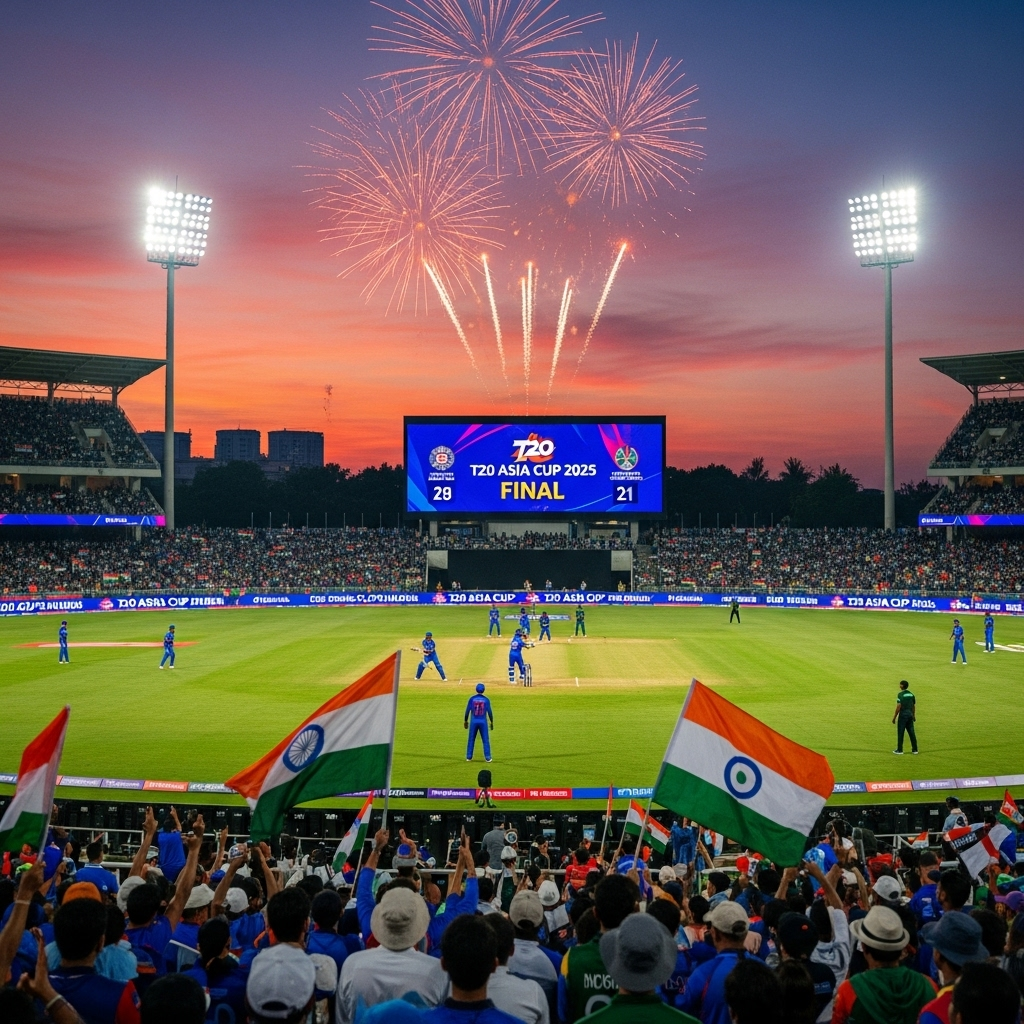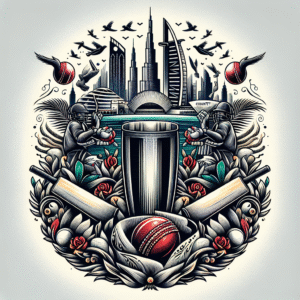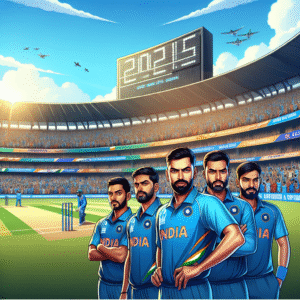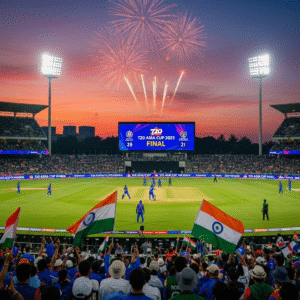Cricket Giants Clash in T20 Asia Cup 2025
Cricket enthusiasts from across Asia and beyond had their eyes glued to the much-anticipated T20 Asia Cup 2025, an electrifying spectacle that witnessed cricket giants clashing in a battle for supremacy. Hosted in the cricket-loving nation of Sri Lanka, the tournament was nothing short of a carnival for the sport’s fans, offering breathtaking action, nail-biting finishes, and awe-inspiring performances. The Sri Lankan venues, renowned for their picturesque backdrops and passionate crowds, set the stage for what was one of the most thrilling tournaments in recent history.
The format of the T20 Asia Cup 2025 was designed to maximise excitement, featuring the top cricketing nations in Asia facing off in a round-robin format before moving into the knockout stages. Teams participating included cricket powerhouses such as India, Pakistan, Sri Lanka, Bangladesh, Afghanistan, and an emerging talent team from the Asian continent. Each match was a must-win for teams aiming to top the group and secure an advantageous position in the semi-finals.
India emerged as a formidable force, driven by a blend of experience and youthful exuberance. Under the leadership of their charismatic captain, India showcased depth in both batting and bowling, epitomized by the dynamic performances of their top-order batsmen. Key players included the prolific batsman Virat Kohli, whose consistency and masterful stroke play left a mark on every game. Additionally, young sensations like Shubman Gill and Ruturaj Gaikwad brought fresh energy and aggressive intent, crucial in the T20 format. The Indian bowling attack, led by the ever-reliable Jasprit Bumrah, combined pace and spin intelligently, making breakthroughs at critical junctures.
Across the border, Pakistan was another team to watch, blending traditional flair with modern-day tactics. Captain Babar Azam was at the heart of their success, consistently anchoring innings and providing stability. The explosive batting talents of Fakhar Zaman and the all-round capabilities of Shadab Khan were pivotal, injecting pace and versatility. Pakistan’s bowling, anchored by the rapid pace of Shaheen Afridi, posed constant threats to opposing batsmen, with Afridi’s ability to swing the new ball being a significant asset.
The hosts, Sri Lanka, enjoyed overwhelming local support, transforming the stadium into a sea of blue and yellow. Sri Lanka’s resurgence in recent years was evident, with the team demonstrating a strategic approach. Their success was largely attributed to their spin trio led by Wanindu Hasaranga, whose ability to outfox batsmen proved invaluable on Sri Lankan pitches renowned for assisting spinners. In batting, Pathum Nissanka and Kusal Perera played pivotal roles, ensuring competitive totals.
Bangladesh, often considered underdogs, arrived with a squad determined to upset the established order. The Tigers showed fight and spirit, driven by influential performances from veterans like Shakib Al Hasan and young guns such as Afif Hossain. Bangladesh’s focus on all-round contributions and adaptive game plans enabled them to stay competitive against more fancied opponents.
Afghanistan continued to enchant fans with their fearless brand of cricket. With superstars like Rashid Khan leading the charge, Afghanistan’s spin-heavy attack rattled opposition line-ups frequently. Their batsmen showcased maturity, with Rahmanullah Gurbaz and Hashmatullah Shahidi navigating both pace and spin adeptly, posing credible threats on fast and turning wickets alike.
One of the standout features of the T20 Asia Cup 2025 was the emergence of new talent from the Asian continent. Teams from associate nations were given the opportunity to compete and learn at the highest level. This initiative not only provided these teams with invaluable experience but also enriched the tournament, unearthing hidden gems destined for cricket greatness. Such participation underscored the expanding reach and globalisation of cricket within Asia.
The round-robin stage was fiercely contested, with each match adding to the tournament’s drama. Key encounters included an epic showdown between India and Pakistan, a battle that transcended sport and ignited passionate emotions. The match lived up to its billing, featuring masterclass performances from star players and culminating in a thrilling last-over finish that saw India eke out a narrow victory, sending fans into a frenzy and securing bragging rights.
Sri Lanka versus Bangladesh was another riveting contest, defined by strategic chess moves on the field. Bangladesh’s Shakib Al Hasan shone with a crucial all-round performance that orchestrated a memorable victory, highlighting his irreplaceable value to the team. However, Sri Lanka’s ability to bounce back against Afghanistan shortly after demonstrated their resolve, resulting in a record-breaking crowd attendance at the R Premadasa Stadium in Colombo.
Each semi-final was a testament to the razor-thin margins that define T20 cricket. The first semi-final witnessed India locking horns with Sri Lanka in a classic test of nerves. India’s bowlers held their composure in the death overs, seizing wickets and forcing errors. A serene finish by the seasoned duo of Virat Kohli and Rohit Sharma helped India chase down the target with valuable contributions from the middle order.
The second semi-final showcased a Pakistan versus Bangladesh encounter steeped in competitive spirit. Pakistan displayed superior strategic acumen, with Fakhar Zaman crafting a sublime inning under pressure. The Pakistani bowling contingent, led by the peerless Shaheen Afridi, thwarted Bangladesh’s pursuits, clinching a spot in the final.
The grand finale saw India and Pakistan renewing their storied rivalry, with yet another chapter poised to unfurl in the annals of cricketing lore. Played at the historic Galle International Stadium, the atmosphere was electric, with passionate fans filling the venue to its capacity, celebrating the spirit of cricket and sportsmanship. The final was a masterclass in tactical nous and athletic brilliance. Each team had its moments of ascendancy, but India edged ahead with a heroic display by Jasprit Bumrah, whose death-bowling heroics stifled Pakistan’s efficient chase.
Notably, the final reflected the broader themes of the T20 Asia Cup 2025 – unyielding passion, evolving strategies, and growing talent across the Asian continent. The tournament not only celebrated established cricketing traditions but also served as a melting pot for innovative tactics and emerging stars.
The T20 Asia Cup 2025 left an indelible mark on players and fans alike, reinforcing the importance of unity and respect among diverse nations. It provided a perfect platform showcasing the spirit, skill, and soul of Asian cricket, setting a benchmark for future competitions. Through riveting contests and memorable performances, the tournament encapsulated everything cherished about T20 cricket – speed, unpredictability, and a theater for cricketing excellence. The legacy of this competition will undoubtedly inspire generations of cricketers and fans, eternally enshrined in the rich tapestry of sports history.













Post Comment